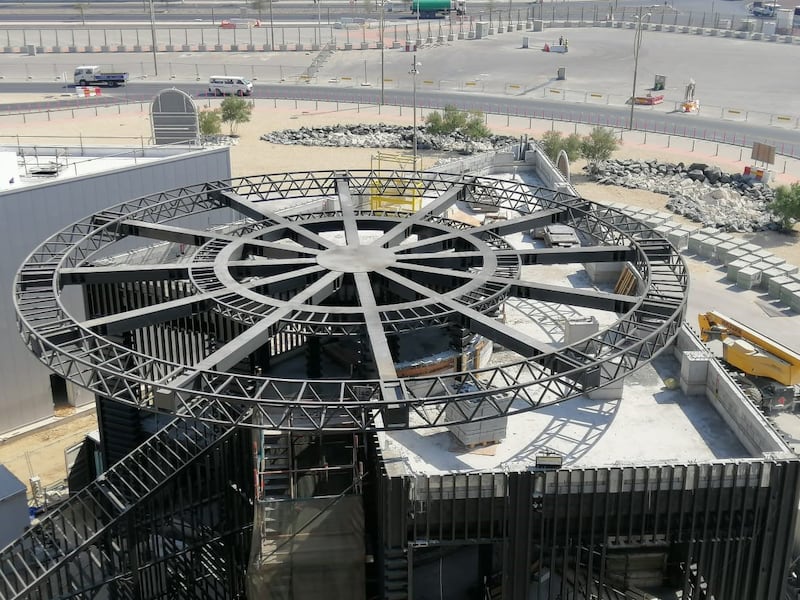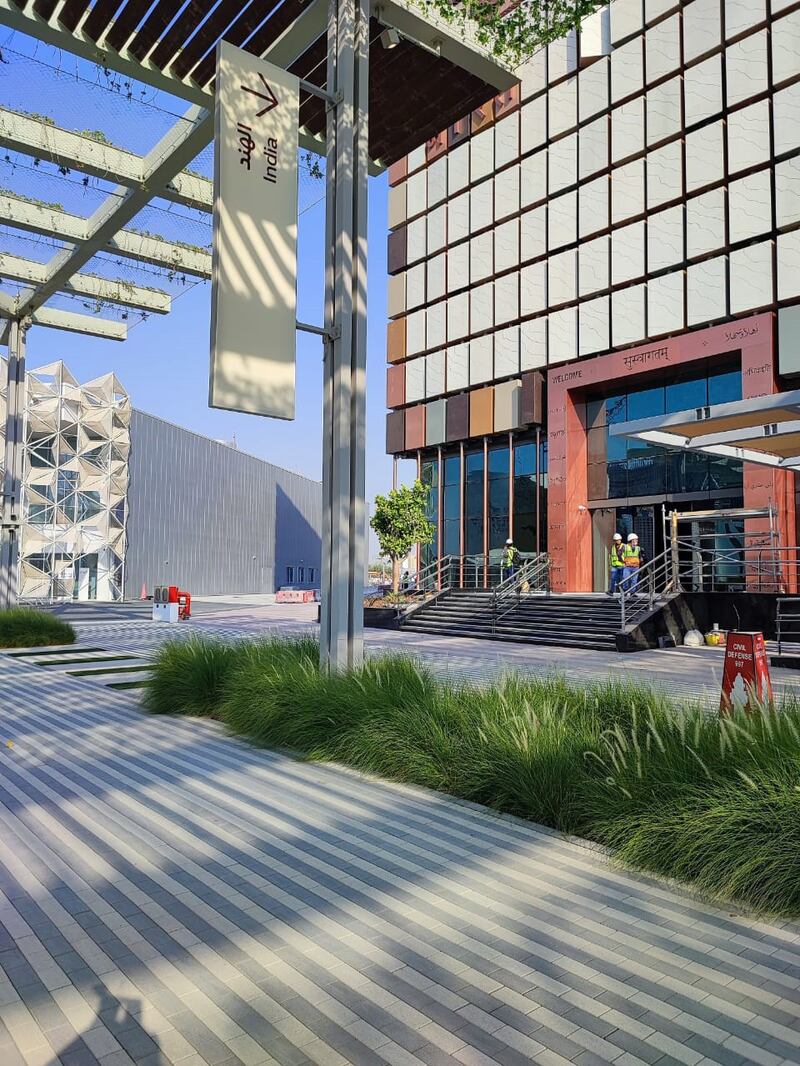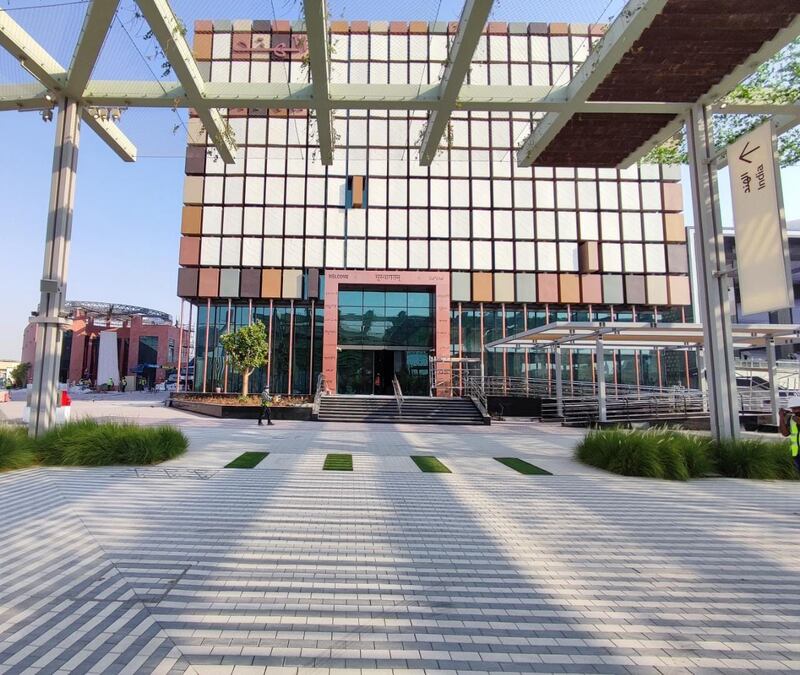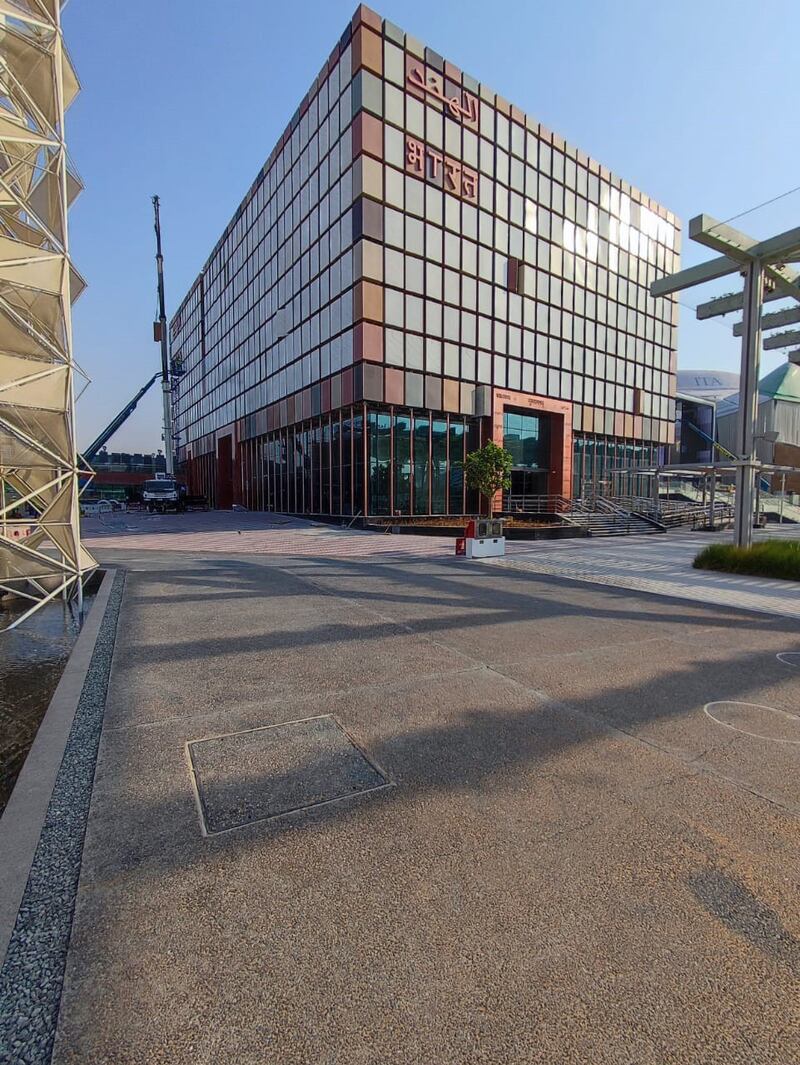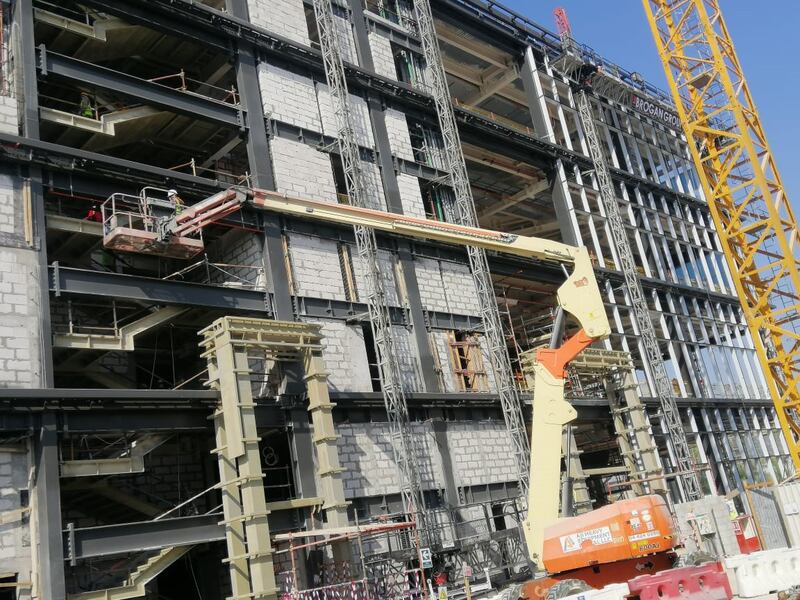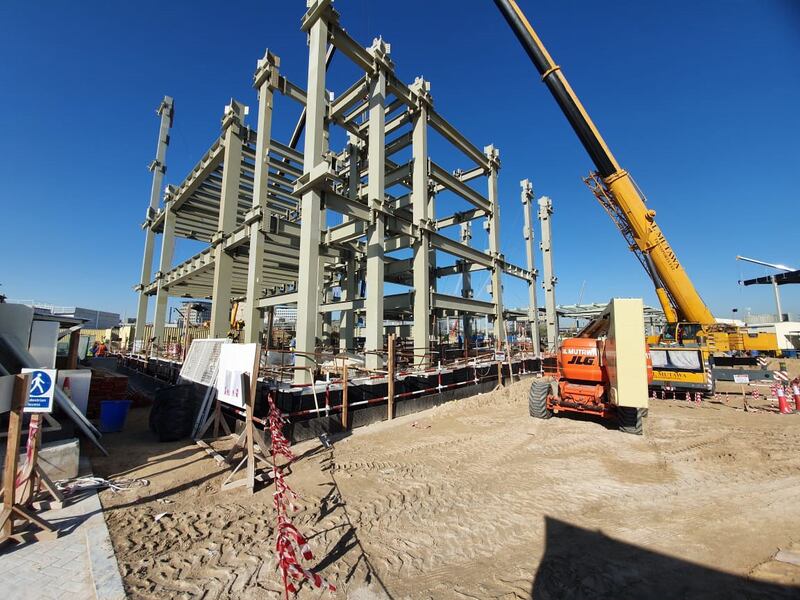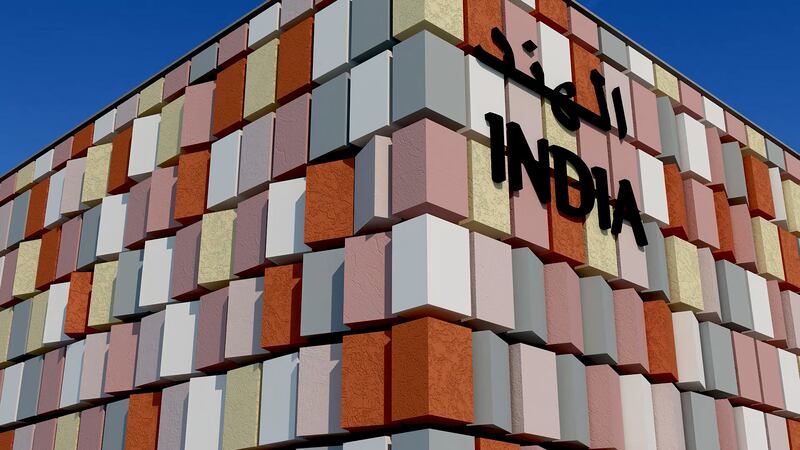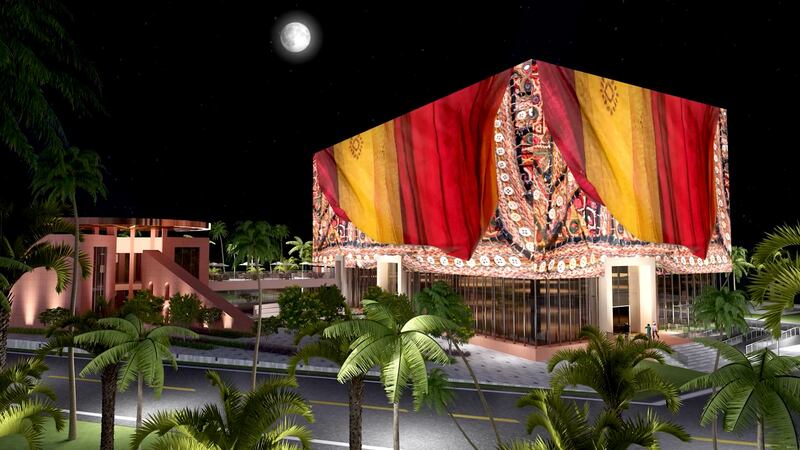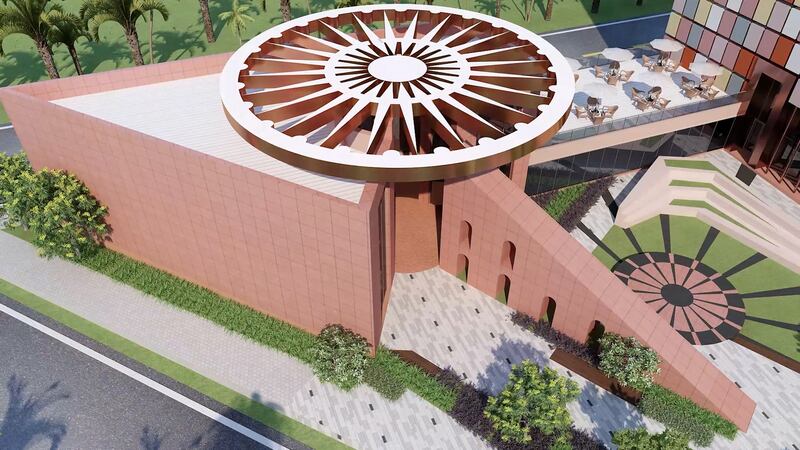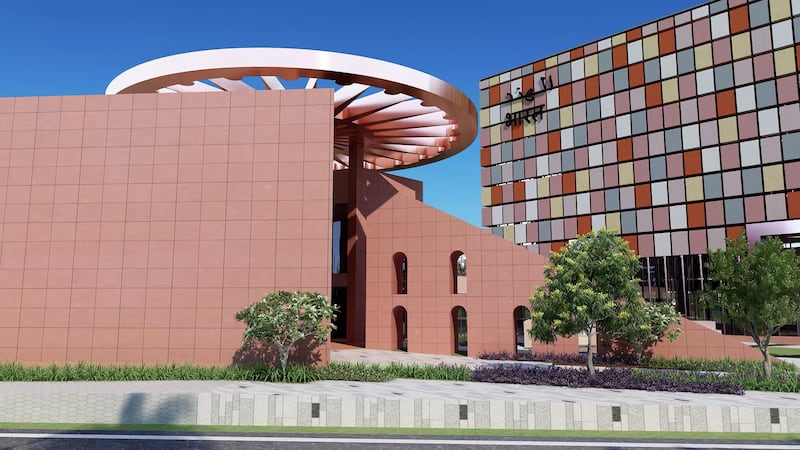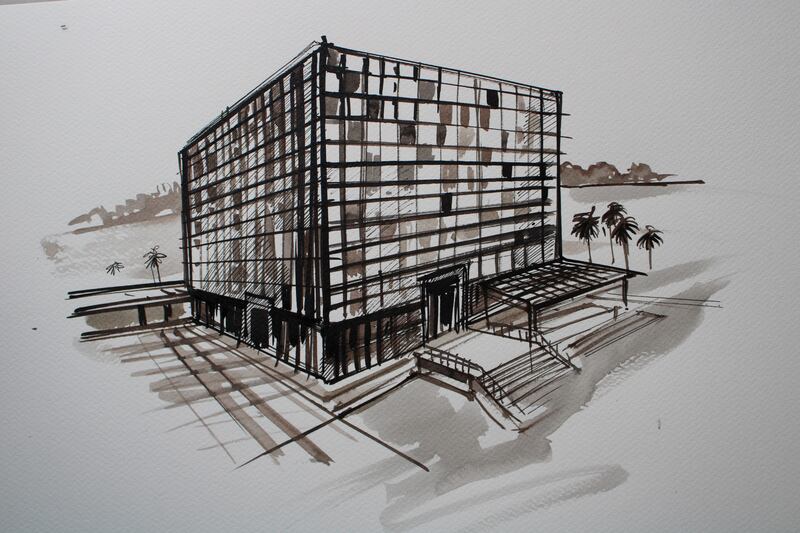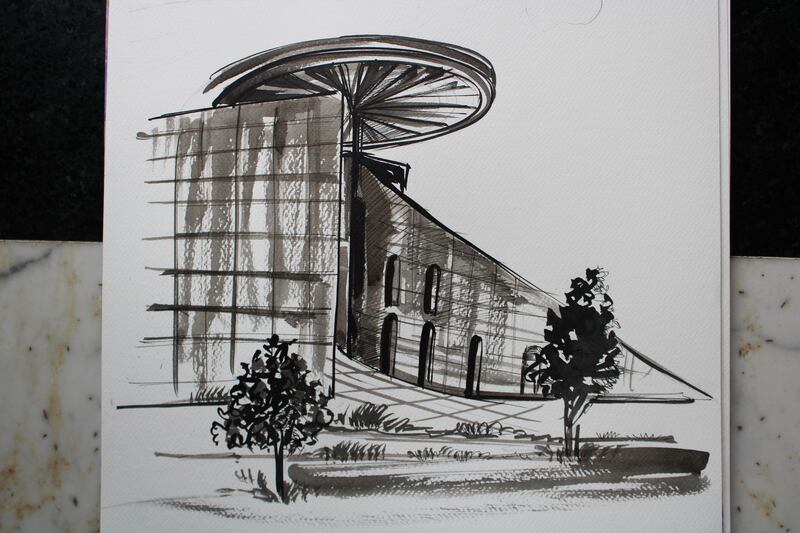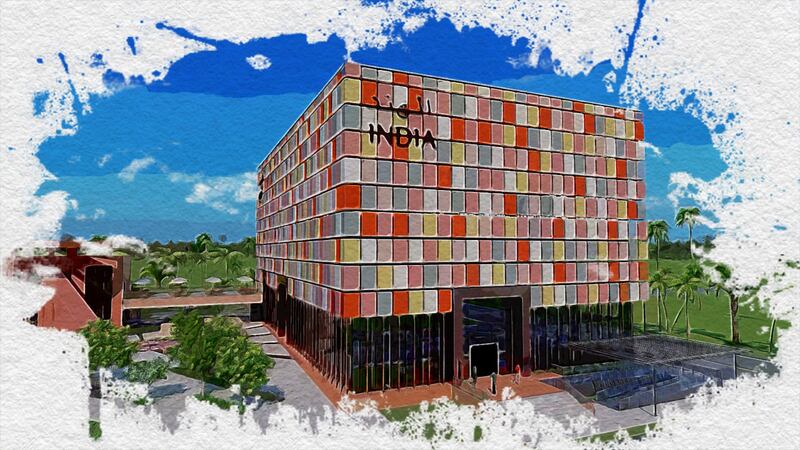India’s pavilion at Expo 2020 Dubai is a dynamic, continually moving structure that will retell stories about the country’s past and plans for the future.
The architect who designed the India pavilion at Expo 2020 said his aim was to capture constant change in the country.
“The kinetic facade helps us to keep changing the story so the building talks to people,” Dikshu Kukreja, managing principal at CP Kukreja Architects, told The National.
“The multidimensionality and dynamism of the facade allows us to tell a different story of India every time. We wanted to show movement and transformation.
“The moving blocks metaphorically represent an India that is changing constantly."
He assured visitors grand views of the huge Expo site from the roof of the five-storey building.
“When you reach the top floor, you realise the scale because you can see the rooftops of the other pavilions,” he said.
Computers control the rotation of each of the 600 earth-toned blocks that wrap around the structure.
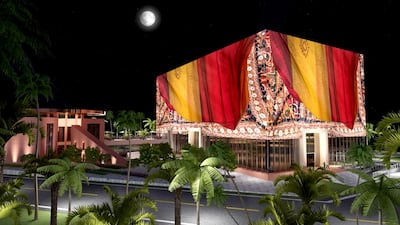
Each unit can swivel individually, in tandem with the entire row or synchronised with the entire wall.
To celebrate 75 years of India’s independence, a wide range of videos featuring culture, dance, industry and the country’s space programme, will be beamed across the structure.
“What the facade will show in the morning will look very different at night – that’s the way it has been designed,” Mr Kukreja said.
“We deliberately used muted colours for the blocks so it could act as a blank canvas. The earthy colours are from the sand dunes in the desert.”
The pavilion overlooks a spinning wheel made of steel and red sandstone.
About the size of a badminton court, the wheel, or chakra, is near the entrance to the pavilion.
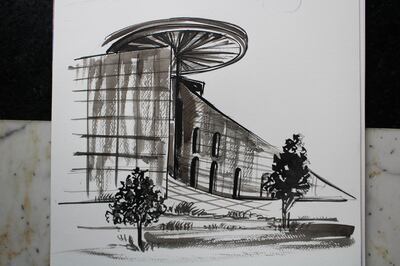
The chakra is inspired by history and linked to India’s independence struggle from British colonial rule.
It is mounted on the roof of a plaza beneath which people can relax and eat a meal.
Visitors will learn about an 18th-century astronomical observatory in India’s capital New Delhi that also inspired the design.
The India pavilion is one of three structures that will remain post Expo when the site will be transformed into a residential and business neighbourhood.
The blocks will serve as a shade to shield the glass and steel interior of the structure from direct sunlight.
“It allows us in a very smart way to control the sunlight coming into the building,” Mr Kukreja said.
“You can change the alignment of the blocks depending on the movement of the Sun. But in the winter when it is pleasant, you can let in more sunlight.”
Planning for the future was an integral part of the initial drawing process.
“I had to keep thinking of Expo and beyond. It’s not one of the pavilions that at the end of the Expo will be dismantled, it’s here to stay. We planned early so it has a legacy built into it,” he said.
“The design is flexible in case the lower floor is used for offices and the top floor for something else. I thought what if I have to open the blocks on the top and keep the ones below closed depending on what purpose the building serves post-Expo.”
The interior will depict strengths of different states, tourist destinations, exhibitions by various industries covering green energy, artificial intelligence, IT, solar energy and agriculture.
“Many displays will have a digital interface so you could see a space flight or the beauty of Kerala or Rajasthan where you can visit,” Mr Kukreja said.
The Expo 2020 Dubai is preparing to welcome visitors from October 1. It will be the first major in-person global event since the pandemic began, with close to 200 countries participating.
